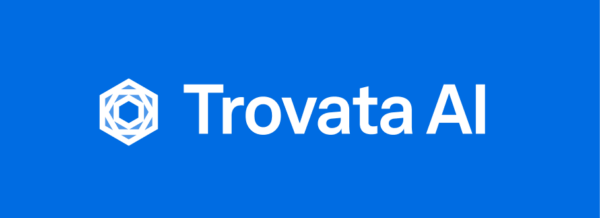Imagine waking up to find your treasury platform proactively moved your idle cash into an interest-bearing account overnight without any manual input. Or imagine receiving a real-time alert that your FX exposure spiked, complete with recommendations on exactly how to mitigate it.
It sounds futuristic, but it’s closer than you think.
Agentic AI is redefining what treasury teams can expect from technology—moving beyond mere automation toward independent decision-making capabilities.
In a recent discussion on the future of treasury technology, Joe Barker, Trovata’s VP of Product, describes agentic AI succinctly: “They’re systems that can accomplish tasks and goals on our behalf, but independently and without much oversight.”
Leading enterprises like JP Morgan, Walmart, and Klarna have already begun adopting these technologies, reporting significant reductions in manual effort and increases in strategic capacity.
As treasury prepares for this shift, you’ll benefit from understanding agentic AI’s real-world impact as a new standard for how treasury teams will operate in the coming years. This article explores exactly how agentic AI works, why it matters, and what treasury professionals must do now to prepare for an AI-driven future.
What is Agentic AI and How Does it Work?
“Agentic AI is about giving software a goal — and letting it figure out how to get there. It doesn’t just follow rules. It uses tools, makes decisions, and acts independently.” – Joe Barker, VP of Product Management at Trovata
Agentic AI blends three elements:
- A language model (the “brain”) for understanding context and intent
- APIs and tools (the “hands and eyes”) to take action
- A prompt or goal (the “playbook”) that defines what the system is trying to accomplish
What makes agentic AI unique is that it integrates decision-making with execution. It sees the idle cash, models the impact, recommends a move, and can carry it out. You’re not prompting it—it’s working for you.
Bottom line: Agentic AI will reduce risk, improve decisions, and free up teams to focus on strategy instead of spreadsheets.
The Evolution of AI and Treasury Use Cases
This table shows how treasury applications of AI have evolved—from the widely adopted use of machine learning, to the emerging role of generative AI, and now to the early-stage but transformative potential of agentic AI.
| Type of AI | What it Does | Use Cases | Maturity in Treasury |
| Machine Learning | Performs specific, rule-based tasks with data-driven learning | Transaction tagging, fraud detection, forecast baseline modeling | Widely used |
| Generative AI | Creates new content based on prompts (text, reports, insights, code, etc.) | Automated reporting, cash insights, assistant-like interfaces | Emerging |
| Agentic AI | A co-pilot executes multi-step tasks independently, adapts based on feedback | Detecting a cash shortfall → modeling → alerting AP with a plan | Early-stage / Experimental |
The Real, Near-Future Treasury Tasks AI Agents Will Automate
While fully agentic solutions for treasury management aren’t yet mainstream, newer, cloud-native platforms like Trovata are already equipped with the right infrastructure and big data foundation to make them a reality.
Barker highlights several real-world tasks treasury professionals will soon offload to intelligent agents:
1. Cash Positioning and Idle Cash Management
Barker explains, “An AI agent can not only suggest fund movements based on thresholds in your cash position, but also take action automatically. If you have idle cash, it might recommend moving it into an interest-bearing account—especially in periods of low volatility—so that your funds aren’t just sitting idle, but are actually working for you.”
2. Intelligent Payment Routing and Compliance
One of the most promising applications is payments.
“AI-driven payment automation could optimize methods, timing, and compliance,” Barker says.
Agents could autonomously handle payment decisions—assessing costs, efficiency, and compliance considerations without manual intervention.
3. Fraud Detection and Anomaly Monitoring
Beyond traditional alerts, agentic AI could proactively monitor all transactions, flag suspicious activities, and autonomously respond.
Barker elaborates, “You could have agents actively managing liquidity and flagging suspicious transactions. It’s not just detecting, it’s taking immediate, automated action.”
A Shifting Treasury Skillset: What Professionals Should Prepare for
Given this powerful shift, what does it mean for treasury professionals, particularly those in junior roles? Barker sees this change less as a threat and more as an evolution of roles:
“The roles won’t disappear—they’ll change,” he explains. “Agentic AI means less time manually combing through spreadsheets and more time for strategic thinking and value-added tasks. Younger, tech-savvy treasury professionals especially have an opportunity to upskill and leverage these AI tools, becoming instrumental in managing and optimizing the AI itself.”
In Barker’s view, treasury teams should actively prepare for a few things:
1. Data Governance and Strategy Alignment
Professionals should start aligning AI strategies with organizational goals and ensuring data governance practices are robust.
Barker says, “If I were a Treasurer, I’d be asking, ‘What does my AI strategy look like as a whole? How does it align with my wider organization? What is my CEO trying to accomplish? Does this line up?’ There are data governance requirements that they’d have to think through.”
2. Upskilling in AI Interaction and Oversight
Continuous learning in AI management, data interpretation, and strategic decision-making will be key. Fortunately, many of these skills can be developed simply by experimenting with AI tools firsthand.
3. Embracing Change Management
Preparing for collaboration with AI, professionals will need to become adept at change management—guiding teams through transitions toward AI-enhanced workflows.
“Whoever understands how to set up the guardrails, the framework, the prompts, and knows how to interact with AI will be super valuable,” Barker emphasizes.
Securing Treasury’s AI-Powered Future
Concerns about security and compliance naturally arise. Barker acknowledges this but underscores the importance of transparency: “The risk lies in implementation—choosing transparent vendors with robust security and clear data usage policies reduces hesitation. The tools aren’t inherently risky; it’s about proper deployment.”
Transparency, compliance, and security remain critical differentiators between valuable and problematic AI solutions. Treasurers should look closely at these factors when selecting technology partners.
Real-World AI Agent Examples
Beyond theory, real-world applications are already emerging. Companies like Klarna and IBM are seeing substantial operational shifts driven by AI. Klarna notably reduced its workforce significantly by using AI in customer service roles, achieving the workload of hundreds of employees.
IBM has replaced hundreds of workers with AI, and now reports that 94% of routine human resources (HR) tasks are handled by artificial intelligence.
JP Morgan rolled out its own large language model suite to 200,000 employees, demonstrating its confidence in generative AI’s ability to enhance productivity and decision-making across all levels of the organization, from customer-facing teams to the C-suite.
While these examples often highlight AI as a driver of workforce efficiency, treasury presents a different story. As a lean, specialized function, treasury won’t see roles eliminated in the same way—instead, agentic AI will serve as a force multiplier. By offloading manual reporting and repetitive workflows, it creates space for treasury professionals to focus on higher-value, strategic contributions that elevate the function’s impact across the enterprise.
The Future of Treasury is Agentic
Agentic AI isn’t a distant vision—it’s already reshaping how the world’s largest enterprises operate, and treasury won’t be far behind. Teams that embrace this shift early will gain a decisive advantage: freeing themselves from manual, tactical work and stepping into a more strategic, leadership-driven role.
Treasury professionals who partner with platforms already building these AI capabilities today won’t just adapt to the future—they’ll define it.
Next steps for Treasurers:
- Gauge your current tech stack
- Begin with systems that give you real-time access to clean, structured data
- Choose partners investing in practical, explainable AI
- Ensure your data, systems, and partners integrate seamlessly
- Focus on areas with immediate ROI and low implementation friction
- Align internal teams and processes to leverage AI effectively
Trovata, our modern cash management and treasury platform, is uniquely built with modern infrastructure that transforms your multibank data so you can take full advantage of AI. Want to see it in action? Book a demo today.




